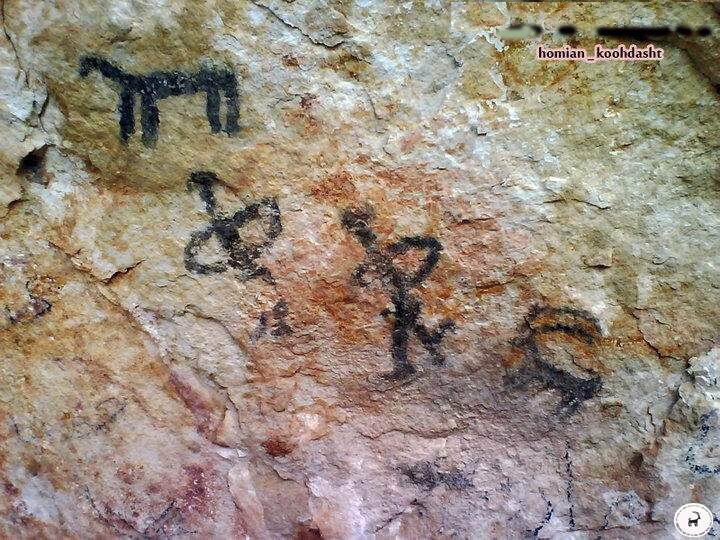Kuhdasht cave has ample evidence of prehistorical dwellers: archaeologist

TEHRAN - Kuhdasht cave in the western province of Lorestan bears ample evidence of prehistorical dwellers and it has vast potential to be a tourism hub, an Iranian archaeologist has said.
“Among the evidence of human life in this cave, we can refer to the bone remains, stone tools, anxious pottery fragments that date from the Bronze Age and other historical periods. It is also home to reliefs and carvings on the mountain rock at the mouth of the cave,” Amir Mansouri Kounani Told Mehr on Friday.
“Such relics and evidence, which include reliefs depicting scenes of the human-being and animals, are of very high significance when it comes to archaeological studies,” he reminded.
Back in April, an ancient bas-relief carving, depicting human-being figures, along with over 100 other objects estimated to date from the Parthian era (247 BC – 224 CE) were discovered in the region.
Traces of the Paleolithic era (Old Stone Age) were also found during the survey, which is first in its kind in Kuhdasht, according to provincial tourism chief Seyyed Amin Qasemi.
Last May, a team of Iranian archaeologists announced evidence of Paleolithic residents found in Kaldar cave, a nearby archaeological site that provides evidence of the Middle to Upper Paleolithic transition in Iran. The team excavated stone tools and a fragment of a fossilized skull, which are attributed to Homo sapiens. The cave also yielded weapon fragments crafted by Neanderthals.
Lorestan was inhabited by Iranian Indo-European peoples, including the Medes, c. 1000 BC. Cimmerians and Scythians intermittently ruled the region from about 700 to 625 BC. The Luristan Bronzes noted for their eclectic array of Assyrian, Babylonian, and Iranian artistic motifs, date from this turbulent period. Lorestan was incorporated into the growing Achaemenid Empire in about 540 BC and successively was part of the Seleucid, Parthian, and Sasanid dynasties.
AFM/MG
Leave a Comment